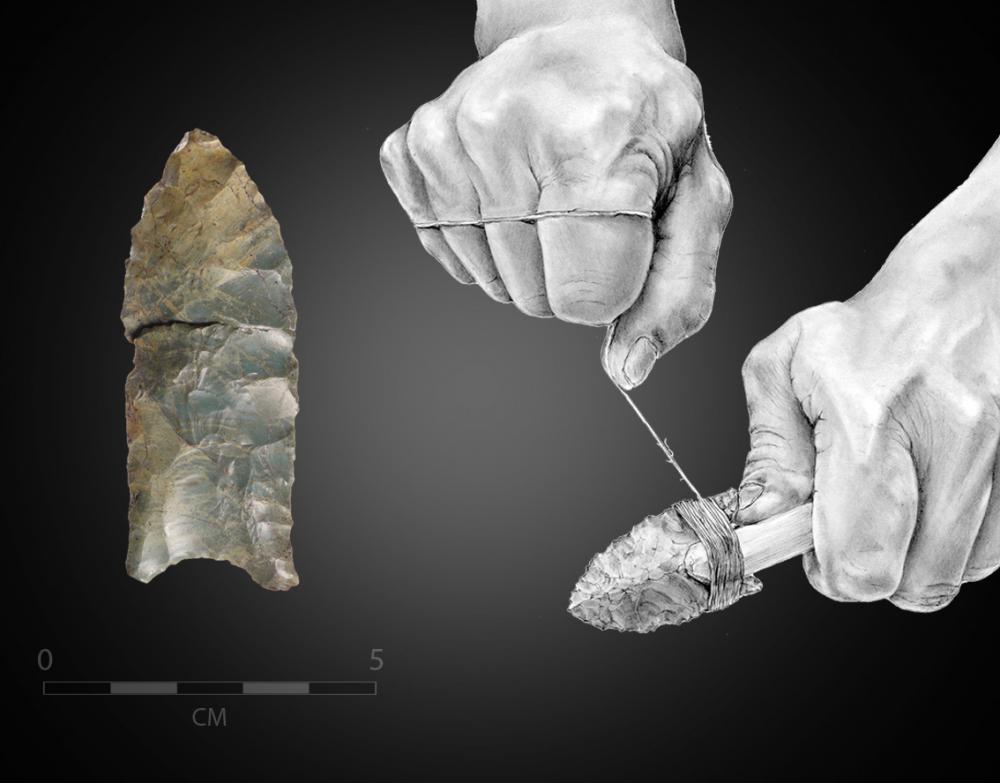How old are the oldest archaeological sites in New York? Put another way, when did Native Americans first people the region that we now call New York? These questions are difficult to answer because there are no radiocarbon-dated sites of these early peoples that archaeologist call Paleoindians. However, characteristic artifacts recovered at these early sites in New York, especially stone weapons tips called fluted points, provide clues.
Dr. Jonathan Lothrop, NYSM curator of archaeology, and Dr. Chris Ellis of University of Western Ontario, were recently interviewed about their research on this topic in a podcast titled, "Clovis Points & Social Life in the Glaciated North East," part of a series on the Peopling of North America. This interview was hosted by Dr. Ash Lenton, producer of the Foreign Countries - Conversations in Archaeology program: Link to Podcast (hosted on dropbox)
The fluted point shown here (at left) is from the early Paleoindian site of West Athens Hill in Greene County. The form of this point and its methods of manufacture indicate that West Athens Hill and a handful of other sites in New York likely represent the earliest Native American presence in the region, dating to the Ice Age, shortly after 13,000 years ago.
As the illustration (at right) shows, fluted points found at early Paleoindian sites in New York were manufactured by percussion flaking and hafted on hunting weaponry.




